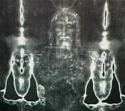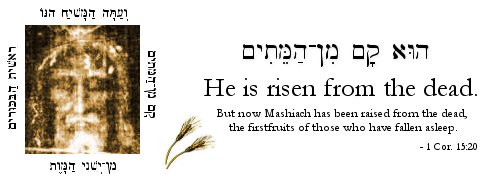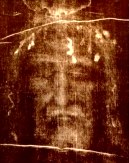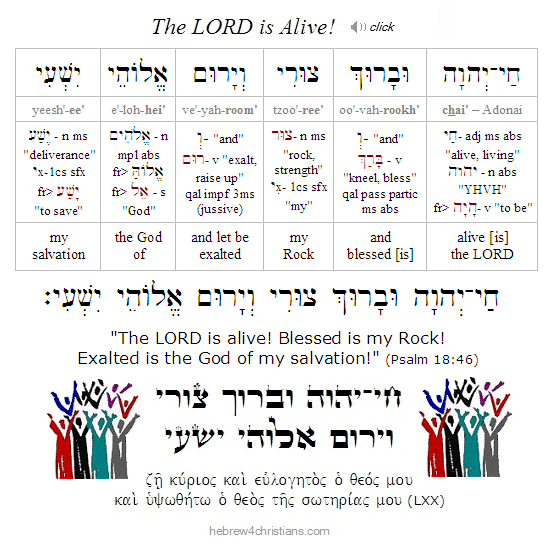|
A few years ago I read fascinating article that reported that one of the leading scientists of the Shroud of Turin Research Project (STRP) later confessed that the sample taken from cloth was flawed (i.e., it came from a piece of the Shroud that was repaired in the Middle Ages, not from the original cloth). The scientist -- Ray Rogers, a chemist from the Los Alamos National Laboratory -- later acknowledged that it's now entirely reasonable to conclude that the cloth was none other than the burial shroud of Jesus of Nazareth. And today I read that the most recent experiments conducted by scientists at the University of Padua (in northern Italy) have dated the shroud to the time of Christ....
Even though the controversy regarding the authenticity of the Shroud of Turin gets technical and involved, I tend to regard the Shroud as authentic, primarily because there are no known means for a medieval artist to have created a "negative" (holographic) image of a body (especially an image with such anatomical detail that only a modern pathologist would appreciate), and there is simply no motive for someone to have done so, anyway. After all, the image on the Shroud is invisible to the unaided human eye. Both the "how" and the "why" questions of the Shroud are troubling to those who deny the possibility of the miraculous, and therefore the idea that the Shroud is a forgery or a hoax has become the standard biased response for many who reject the historical resurrection of Yeshua from the dead.
On the hypothesis that the Shroud of Turin is a sophisticated forgery, however, we must suppose there once was a medieval artist who was so talented that he or she could paint the "negative" image of a body, that is, an image with the full spectrum of light reversed. Moreover, this artist would have to paint in obverse -- somewhat like a minting impression. This painter also would have to be intimately familiar with the customs of crucifixion that were unknown during the Middle Ages. For instance, he or she would have to know that the Romans crucified their victims entirely naked, that they pounded the nails through the wrists (not through the hands, as is usually depicted by stigmata paintings of the period), that the victim wore Palestinian style "earlocks" (i.e. peyot ha-rosh) and so on. This fantastic artist also would have to paint in an incredibly realistic and detailed style (again, unlike all other artists of the period), noting such things as the presence of a coin located under the right eyelid and the presence of various blood stains in physiologically correct locations on the cloth.... Finally, this medieval artist would have to paint from the perspective of a "negative exposure" -- a concept that was unknown until the development of modern photography. In short, it seems that our hypothetical artist would have to be something of a miracle worker.... If the Shroud is fake, then it's a "miraculous" fake; but if it's true, then it's astoundingly true; either way, however, the Shroud testifies of something amazing (or rather Someone).

In addition to the lack of technology in the Middle Ages to create such an image, the question must be asked about why such an invisible image would be produced in the first place. What possible motive would be at work in this case? Why would our supposed artist go through all this trouble, especially during the relatively superstitious Middle Ages? What point would there have been in creating such a fantastic duplicity? The inference to the best explanation suggests that the Shroud of Turin, whatever else it might be, certainly is not the result of human ingenuity and forgery.... Occam's Razor applies in this case: we do not need to multiply miracles in order to explain something that could be explained through the attested historical accounts of the resurrection of Yeshua.
So should the Shroud of Turin be cited as evidence of the resurrection of Yeshua? Is it a valid "apologetic" device, an empirical "proof" of the resurrection? Well, since we cannot say for certain that the image is that of Yeshua ha-Notzri (Jesus of Nazareth), we cannot make a dogmatic claim that this is direct evidence of His resurrection, though it's surely consistent with it. The shocking image -- revealed through negative spectrum light -- is that of a 1st century Jewish man who was beaten, whipped, and crucified. Pollen samples taken from the cloth also indicate a Middle East provenance. Though we cannot offer a scientific "proof" that this is the burial shroud of Yeshua, we might make a "legal" case that it is.... In other words, the imprinted image of the Shroud is consistent with the testimony of the New Testament and the theistic worldview, but certainly not with "naturalism" or other worldviews. The Shroud is a "problem" for those who are unbelievers, not believers... If it were later debunked as some sort of a forgery, our faith would remain unshaken, since we believe in order to understand, not conversely. Empirical evidences are never conclusive for skeptics anyway. As Yeshua said, "If they do not hear Moses and the Prophets, neither will they be convinced if someone should rise from the dead" (Luke 16:31). And perhaps that's the allure and beauty of the Shroud -- like so many other matters of faith, what you see is what you ultimately choose to see.... Like a looking glass, it reveals more about the person looking at it than it does of the thing itself...

Addendum: Please note that I am not advocating venerating relics or any such nonsense. Such things are always insufficient for a heart change from God. As Yeshua said, "If they do not hear Moses and the Prophets, neither will they be convinced if someone should rise from the dead" (Luke 16:31). Nonetheless, I find it fascinating that if the Shroud of Turin is a forgery, it's entirely amazing and unlike any other seen before, but if it's authentic, it's evidence of the resurrection itself. I also see no sense in claiming (as some have) that the Shroud is some form of "satanic deception." After all -- forgery or not -- the Shroud points to something the devil certainly doesn't want to be published, namely, the death, burial, and resurrection of Yeshua...
Hebrew Lesson:
Psalm 18:46 Hebrew reading:
<< Return
|




